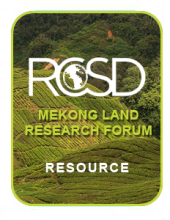Land Library
Welcome to the Land Portal Library. Explore our vast collection of open-access resources (over 74,000) including reports, journal articles, research papers, peer-reviewed publications, legal documents, videos and much more.
/ library resources
Showing items 1 through 9 of 50.This document presents the key findings of the evaluation of an integrated agricultural production and water management project implemented by IFAD in Netrakona district, in northern Bangladesh.
This book, prepared by the Philippine Environmental Governance Project, serves as a reference guide for field personnel in guiding communities, investors, local government units, private persons and other organisations desiring to apply for tenure instruments on forest lands.The book covers all e
Land policies are of fundamental importance to sustainable growth, good governance, and the well-being of, and the economic opportunities open to, both rural and urban dwellers - particularly the poor.
Research on collective action confronts two major obstacles. First, inconsistency in the conceptualization and operationalization of collective action, the key factors expected to affect collective action, and the outcomes of collective action hampers the accumulation of knowledge.
Contrairement aux prévisions communément admises quant à l’aggravation du déclin économique de l’Afrique, une récente étude présente une vision alternative plus positive de l’avenir de ce continent.
The vicious poverty–environmental spiral commonly exists due to the interconnectedness of the socioeconomic aspects of farmers and land degradation. The socioeconomic situation of farmers affects their capabilities to implement environmentally viable soil and water conservation measures.
Extensive livestock farming systems in the Less Favored Areas (LFA) of the European Union (EU) are under social stress and requirement to adapt their production practices to new economic and social realities.
The Nigerian savanna soils are low in fertility, organic matter and cation exchange capacity. The traditional method of improving the fertility and productivity of soils of the savanna is through natural fallowing which typically takes three to five years.






